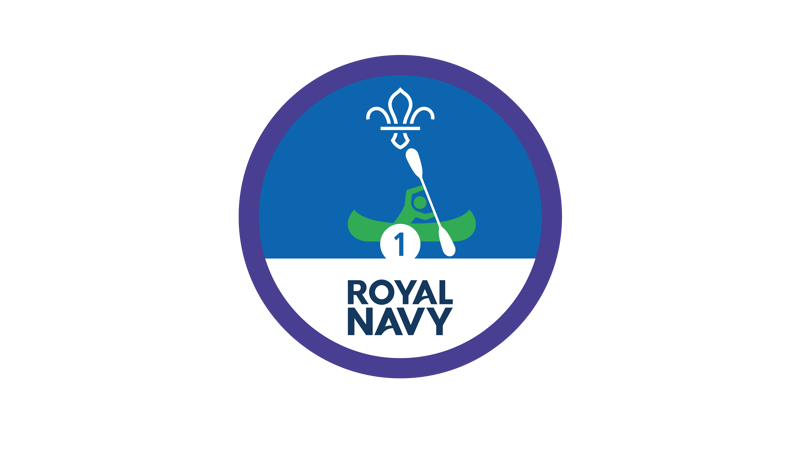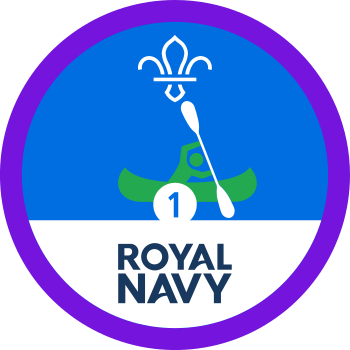
Standup paddleboarding (SUP)
What to expect
Standup paddleboarding (SUP) involves standing on a board similar to a surfboard or windsurf board and using a long paddle to move yourself around. SUP can be done on rivers, lakes or the sea.
As SUP boards are usually quite light (and often inflatable) and easy to carry around, they can go anywhere and are a great way to explore the outdoors, without eroding the riverbanks or making lots of noise.
Giant SUP boards are also available, allowing groups to practice teamwork, listening and communication, while having lots of fun.
What you’ll learn
Paddleboarding will help you to work on your balance, which helps improve your core strength, and is a great way to exercise.
Fun facts
Paddleboarding is thought to date back thousands of years, and was practised as far afield as Hawaii, Peru and Italy. 16th century Hawaiian paddleboarders used boards that were up to five metres long!
Handy hints
- Start with SUP. Stand-up paddleboarding is a great intro to different paddlesports and can be more easily accessible too. Try SUP if it’s your first time on the water.
- Make a splash. Everyone falls off, so don’t be embarrassed! Always bring a change of clothes and make sure to run this adventure when the weather’s a bit warmer.
Try this activity at one of our adventure centres
Stand up on your paddle board and propel yourself through the water. Go fast, take it slow, either way it's a great way to take in the stunning landscape of Kielder.
Go stand-up paddleboarding with Scout AdventuresSafety
You must always:
- Complete a risk assessment
- Have the right ratios of number of adults to provide suitable supervision
- Set up an InTouch process
- Know what to do in an emergency
- Share information with parents and carers with an activity information form
- Get approval from your commissioner
Be safe outdoors:
- Check the weather forecast
Be safe in water:
Everyone should be able to swim 50 m wearing the clothing or equipment for the activity. Non-swimmers will need additional support.
Water can be dangerous - be aware of the risks.
The category of water depends on how safe the water is. Use our waterways directory to check.
Be sure to manage the group when near water, keeping everyone safe.
Make sure that all equipment is fit for purpose and in good condition:
Everyone must wear a life jacket or buoyancy aid.
The instructor must make sure boats are seaworthy.
There are regulations you must follow if you are hiring a boat.
Joint activities with other organisations:
- This activity can be run jointly with Girlguiding.
- This activity can be run with other organisations.
This activity can be led by you or someone else in Scouts:
The activity leader must have an adventurous activities permit with the right level and permissions for your group.
You don't need a permit for activities on Class C waters (safe, inland water less than 100 m wide).
Where the group is entirely members over the age of 18 the permit scheme does not apply, please follow the rule 9.8 adult groups.
You can go to a centre or use an activity leader who is not part of Scouting:
You must find a suitable provider who meets the following requirements:- The centre/instructor should hold one of these: (If the provider is AALA exempt)
- British Canoeing - Coach Award (level and discipline specific - with appropriate endorsements for the waters being used)
The provider must have public liability insurance.
Guidance
Reflection
Stand-up paddleboarding is a great way to get active and go and explore the outdoors. The gear is also easier to carry around than kayaks or canoes, and some things can even be folded away for easy storage. Because paddleboards are lighter, they’re often less damaging to the environment, as they cause less erosion to riverbanks and destroy fewer aquatic plants. What different ways can we reduce our environmental impact when we do different paddlesports? These could be things like launching from the water so we don’t damage the bank, or picking up rubbish as we go, or even choosing somewhere closer so we don’t have to drive as far. Protecting the environment will let us enjoy activities like stand-up paddleboarding for years to come and help us think more about how we impact our environment every day.
- Stand-up paddleboarding can often be adapted so more people can give it a go. Many outdoor centres have facilities that cater for people with additional needs and experienced instructors to help everyone achieve their goals. Get in touch with your local provider to chat through the needs of people in your group – make sure you give them plenty of notice.
- SUP is a great adventure for everyone to get involved in because of the simplicity of the board and paddle and the range of ways that they can be used. Stand-up paddleboards can be adapted in a variety of ways to make sure everyone has the opportunity to get involved. As adaptations may need to be made, get in touch early with your provider to discuss any additional needs and make sure they can provide a session that works for you and your group.
All Scout activities should be inclusive and accessible.



